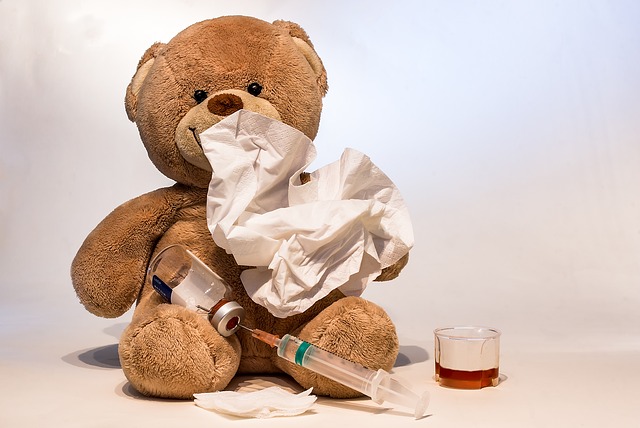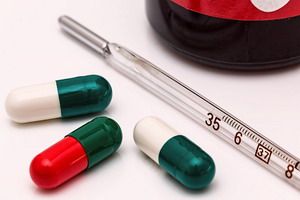
Last week I got sick. This is something I rarely do, but it highlights that when we do not get enough rest and relaxation that is of a rejuvenating type, our immune system starts to fail. Rejuvenation is not a priority in stroke patient care, but it needs to be, for the caretaker as much as the patient. Our immune system and our emotions are two parts of the same system. This reality was first brought to a level of scientific understanding by researcher Candice Pert back in 1997 when she published her now famous book: Molecules of Emotion. Her work laid the foundation for the modern field of psychoneuroimmunology – the study of the interaction of the mind and the immune system.
Unfortunately knowing this information did not help me one bit when I was crashed on the bed with the flu and I was too tired to even take off my shoes. If tiredness were the only problem, then sleep would have helped. But the real issue was every joint in my body was screaming out in pain at the same time my head was trying to explode. To top it all off, my sinuses were trying to drown me and my tonsils were so swollen and painful that swallowing made it impossible to sleep. Killing me would have been a mercy.

Ah but numerous “angels of mercy” stopped by with their favorite herbals and homeopathics and tinctures and even good old fashion hot soup. These all worked to pull me up to the fevered coughing stage, which is my body rousting enough energy to fight back. By Saturday the fever had broken and the screaming joints and head had settled down to a tolerable level. Strangely the most annoying thing at this stage was the wheeze/whistle with every breath that still was keeping me from sleeping. The lung congestion was the final phase of this illness. My history of lung scaring from pneumonia makes this a weak spot for me. The scare tissue creates lots of spaces with poor blood supply where bugs can hide out.
This brings us to the new health idea for this newsletter. I got this idea from Mike Adams – the Health Ranger. I have used colloidal silver for the last 30 years to keep bugs at bay. But you have to be able to get the colloidal
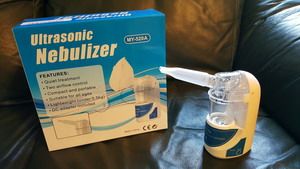
silver to where the bugs are. In the case of my lungs, that is hard to do. Drinking colloidal silver allows the blood supply to carry the silver most everywhere…except into areas of poor blood supply due to scaring. The brilliant idea he came up with is to put the colloidal silver into an ultrasound nebulizer and inhale the colloidal silver vapors deep into the lungs. The logic of this technique is clear, but a big WARNING – NO ONE HAS EVER STUDIED USING SILVER IN THIS WAY. This will deliver the silver to right where it is needed and since colloidal silver is so safe for human tissues everywhere else, it should be perfectly safe on lung tissue. But lots of things in the body don’t follow logical reasoning, because we don’t know what we don’t know. This is one of those things that we will only discover by trial and error.
That being the case, I cannot suggest you use this technique. I can only say that I am using it quite effectively in my situation and if you have a need and desire to be a medical pioneer, then try it out for yourself.
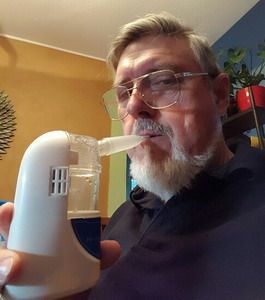
This technique will not work in a steam inhaler; the silver will not be released into the steam. It has to be an ultrasound inhaler/nebulizer. I put some 5 ppm colloidal silver water into the nebulizer and turn the unit on. With ultrasound the vapor production is immediate. I inhale the vapors as deeply as I can for about 5 to 10 minutes three or four times a day. It does a nice job of loosening up the phlegm and it only took one day for me to get rid of the rusty sputum.
Why did I try an experimental process on myself? Why didn’t I go to the doctors and get antibiotics? One of the things I was monitoring was my temperature. It never got over 100.3, which means that the lung pneumonia was viral, not bacterial. The flu that started this whole process is also viral. Being viral, there are no antibiotics to take for this condition. The best you can do is rest and support your immune system while it fights off the invading virus. There are lots of supplements, herbs, and homeopathics that can help out with this, but as the old saying goes, “With treatment the flu will only take seven days to run its course, but left on its own it will take a good week.”
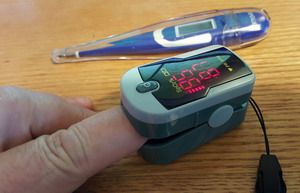
In addition to monitoring my temperature, I was also monitoring my blood oxygen saturation with a simple clip on the finger pulse oximeter. If my lungs started losing capacity due to infection, it would show up in less oxygen in my blood. That is why they always stick one of these monitors on you in the hospital. The gizmos are cheap – like $30, and everyone should have one along with the thermometer. There are many situations where I am able to check to see if the reason I might be feeling off is due to low oxygen levels. A common example is when people get stressed and their diaphragm locks up as part of a flight-or-fight response. This decreases your lung volume and lowers your oxygen levels. This can trigger a panic attack. This helps to distinguish a panic attack from an oxygen need versus a panic attack coming from low blood sugar.
The pulse oximeter is also an easy way to keep a measure of your pulse for doing food sensitivity challenge testing. If your pulse jumps more than 7 beats per minute after eating a food while at rest, then your body is showing a stress reaction to the food. A resting pulse rate above 78 is an indication of a current food reaction generally – in case you start testing with a high pulse. You would have to wait until the pulse came down before doing any testing.

The basic message of this newsletter is that even when you are feeling really bad, you can still use your home based skills to take care of many of your health needs. Doctors are good for when we really need them, but a healthy dose of self-reliance goes a long way. Common sense, rest, fluids, keeping warm, and knowing how to assess when you might need extra help will go a long ways towards keeping you healthy in the long run. Antibiotics are a last resort answer. They are not for making you more comfortable – they are for saving your life when the bugs are beating your body.
